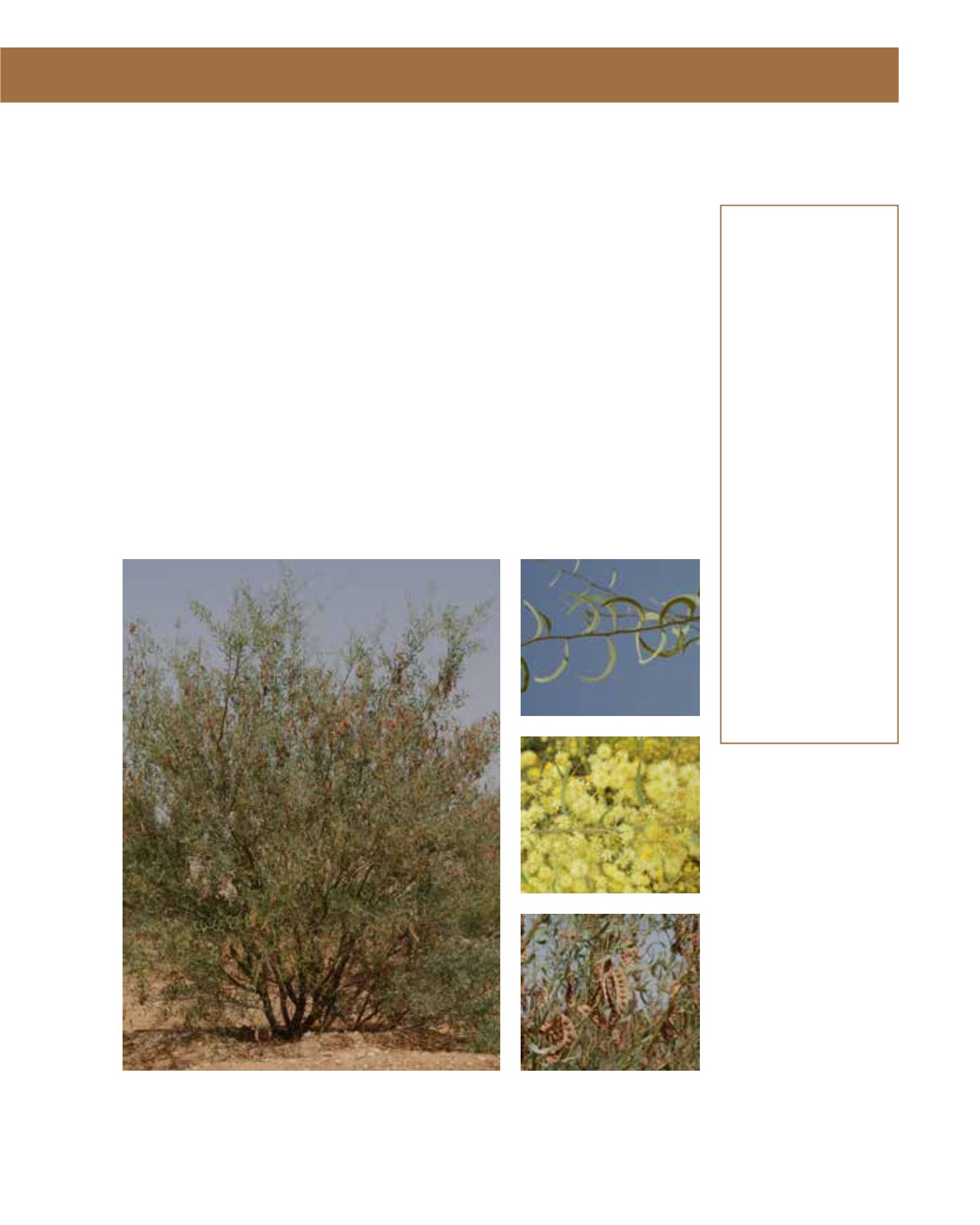

GENERAL
Origin
:
Mediterranean,
sub-tropical,
tropical
Humidity
:
semi-arid, semi-
humid
Propagation :
sowing and
pricking out
Maintenance :
low
CONDITIONS
Urban climate :
resistant
Dessication :
resistant
Stagnant water :
resistant
Irrigation
:
low
Salinity/ppm :
moderate (3000
ppm)
Hardiness
:
-6°C
SHAPE
Type
:
shrub, tree
Height
:
2 m-9 m
Spread
:
3 m-7 m
Foliage
:
evergreen
FLOWER
Colour
:
pale yellow
Size
:
0.7 cm
Period
:
March - June
Smell
:
pleasantly
scented, flower
FRUIT
Type of fruit :
pod
Fruit size
:
8 cm
A. victoriae is a widespread native acacia of Western Australia, commonly found on sedimental
deposits such as floodplains, along watercourses or alluvial flats, but also on rocky hillsides and
ridges. It is a nitrogen-fixing shrub or small tree with multi-stems from or near ground level,
favouring soils that are well drained and often alkaline, including clayey alluvials and saline
loams: it is moderately salt-tolerant. As such, it has potential for more widescale use in the
Arriyadh region. Foliage consists of dull blue-green phyllodes which are slightly curved and
have a waxy appearance The strongly scented, cream-coloured puffball flowers occur profusely
during early spring. Mature, papery pods remain prominent on the tree until early summer.
Frost tolerant to –5°C and sensitive to waterlogged soils, A. victoriae is known to be moderately
tolerant of protracted droughts, although killed when drought is severe, unless deep watering is
carried out. Its root system is moderate to deep. The tree is short-lived, less than 15 years, while
the growth rate is moderate to slow. Propagation is by scarified or boiled seed. This acacia is an
elegant garden or screening plant and makes an excellent windbreak. Sometimes forming thickets,
it is also used to prevent erosion and remediate mine sites. The tree forms root suckers. There is a
high potential for the tree to become weedy or invasive. With a low maintenance requirement, it
will withstand clipping well. When blooming and seeding, this tree needs supplemental irrigation.
36
Acacia victoriae,
Mimosaceae
Prickly Wattle,
Bramble Wattle
















